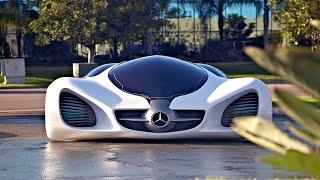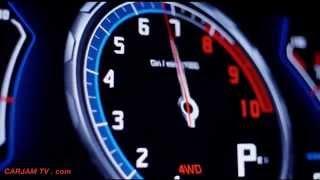2017 Toyota C-hr: A Funky Cuv For The Subcompact Crowd
Late To The Party, But Determined To Rock Out.
If The Exploding Subcompact-crossover Segment Were A Party, Toyota Would Only Now Be Showing Up With A Black Eyed Peas Cd And A Sixer Of Smirnoff Ice In Hand Well After Everyone Else Has Passed Out. That’s How Late Toyota Is To This Shindig. Kia Kicked Off The Party In 2009 With The Boxy, Front-drive Soul And A Horde Of Party-boy Hamsters. During The Introduction Of The 2017 Toyota C-hr At The 2016 Geneva Auto Show, The Japanese Automaker Acknowledged That It Was Playing Catch-up But Made It Clear That It’s Determined To Be The Life Of The Party Regardless. Toyota Hopes It Can Stand Out From The Crowd Of Sober Alternatives With A Wild Design That Invites Only One Comparison—to The Equally Outgoing Nissan Juke.
Killer Looks
“c-hr” Is Toyota’s (slightly) Ier Way Of Saying “coupe - High Rider” Despite The Fact That This Vehicle Has Four Doors And Rides Quite Low For A Crossover. The Company Did A Better Job With The Styling Than The Name. The Bulging Fenders, Tapered Greenhouse, Falling Roofline, And Rising Beltline Were Originally Sketched At Toyota’s California Design Studio And Survived Almost Entirely Intact Through Two Concept Iterations That Were Shown In September 2014 And September 2015. (there Also Was A Scion Version Shown Last November, As The C-hr Was To Be Sold Here Under That Brand Before Toyota Killed It Off Last Month.) The Styling Is The Very Definition Of Polarizing. The C-hr Is Not Remotely Beautiful, But The Busy Surfaces And Many Creases Catch Shadows And Reflect Light In Such A Way As To At Least Make It Interesting To Behold. The Detail Work Is Equally Fussy. The Slim Led Headlights Stretch Way Back Over The Peak Of The Wheel Arches, The Rear Door Handles Are Hiked To The Roof, And The Taillights Could Have Been Lifted From The Honda Civic Hatchback That Would Debut An Hour Later On The Opposite Side Of Geneva’s Palexpo Convention Hall.
Smaller, But Not The Smallest
The C-hr Is Built On Toyota’s New Global Architecture (tnga), A Flexible Platform That Debuted With Toyota’s Fourth-generation Prius. Compared With The One-size-up Rav4, The C-hr Is Roughly 10 Inches Shorter, Two Inches Narrower, And Four Inches Lower. Yet The C-hr Still Has A Significant Size Advantage On The Juke. The Toyota Packs An Extra 8.9 Inches Of Length And 4.3 Inches Of Wheelbase Compared With The Nissan, So It Should Be Better Suited To Moving Passengers And Cargo Behind The Front Seats. Toyota Also Says It Wants The C-hr’s Dance Moves To Match Its Looks. Engineers Claim It Handles Like A C-segment Hatchback, With Less Body Roll Than The Common Crossover.
Party On The Outside, Humdrum Under The Hood
The C-hr Will Be Offered With A 1.2-liter Turbocharged Four-cylinder Or A Hybrid Powertrain That Uses A 1.8-liter Four-cylinder, But It Seems Unlikely That Either Of Those Choices Will Make It To The U.s., At Least Initially. (u.s. Toyota Representatives Were Unable To Verify The Powertrains Or The Launch Timing For Our C-hr.) We Suspect That Americans Instead Will Receive The Third Powertrain, A Naturally Aspirated 2.0-liter Four-cylinder Paired Exclusively With A Continuously Variable Automatic Transmission. Front-wheel Drive Should Be Standard, With All-wheel Drive Optional.
Pricing And Fuel Economy Are Left To Your Imagination For Now. Toyota Does Say The C-hr Can Be Equipped With Lane-departure Warning And Adaptive Cruise Control, Although We Can’t Be Certain They’ll Be Offered In The U.s., Either. So Even Though The C-hr Has Nearly Arrived At The Party, It’s Raised Many More Questions Than It Has Answered. We’ll Have To Wait For The C-hr To Arrive At A U.s. Auto Show To Get Any Answers.
Read More New 2016
"subscribe Now"
Late To The Party, But Determined To Rock Out.
If The Exploding Subcompact-crossover Segment Were A Party, Toyota Would Only Now Be Showing Up With A Black Eyed Peas Cd And A Sixer Of Smirnoff Ice In Hand Well After Everyone Else Has Passed Out. That’s How Late Toyota Is To This Shindig. Kia Kicked Off The Party In 2009 With The Boxy, Front-drive Soul And A Horde Of Party-boy Hamsters. During The Introduction Of The 2017 Toyota C-hr At The 2016 Geneva Auto Show, The Japanese Automaker Acknowledged That It Was Playing Catch-up But Made It Clear That It’s Determined To Be The Life Of The Party Regardless. Toyota Hopes It Can Stand Out From The Crowd Of Sober Alternatives With A Wild Design That Invites Only One Comparison—to The Equally Outgoing Nissan Juke.
Killer Looks
“c-hr” Is Toyota’s (slightly) Ier Way Of Saying “coupe - High Rider” Despite The Fact That This Vehicle Has Four Doors And Rides Quite Low For A Crossover. The Company Did A Better Job With The Styling Than The Name. The Bulging Fenders, Tapered Greenhouse, Falling Roofline, And Rising Beltline Were Originally Sketched At Toyota’s California Design Studio And Survived Almost Entirely Intact Through Two Concept Iterations That Were Shown In September 2014 And September 2015. (there Also Was A Scion Version Shown Last November, As The C-hr Was To Be Sold Here Under That Brand Before Toyota Killed It Off Last Month.) The Styling Is The Very Definition Of Polarizing. The C-hr Is Not Remotely Beautiful, But The Busy Surfaces And Many Creases Catch Shadows And Reflect Light In Such A Way As To At Least Make It Interesting To Behold. The Detail Work Is Equally Fussy. The Slim Led Headlights Stretch Way Back Over The Peak Of The Wheel Arches, The Rear Door Handles Are Hiked To The Roof, And The Taillights Could Have Been Lifted From The Honda Civic Hatchback That Would Debut An Hour Later On The Opposite Side Of Geneva’s Palexpo Convention Hall.
Smaller, But Not The Smallest
The C-hr Is Built On Toyota’s New Global Architecture (tnga), A Flexible Platform That Debuted With Toyota’s Fourth-generation Prius. Compared With The One-size-up Rav4, The C-hr Is Roughly 10 Inches Shorter, Two Inches Narrower, And Four Inches Lower. Yet The C-hr Still Has A Significant Size Advantage On The Juke. The Toyota Packs An Extra 8.9 Inches Of Length And 4.3 Inches Of Wheelbase Compared With The Nissan, So It Should Be Better Suited To Moving Passengers And Cargo Behind The Front Seats. Toyota Also Says It Wants The C-hr’s Dance Moves To Match Its Looks. Engineers Claim It Handles Like A C-segment Hatchback, With Less Body Roll Than The Common Crossover.
Party On The Outside, Humdrum Under The Hood
The C-hr Will Be Offered With A 1.2-liter Turbocharged Four-cylinder Or A Hybrid Powertrain That Uses A 1.8-liter Four-cylinder, But It Seems Unlikely That Either Of Those Choices Will Make It To The U.s., At Least Initially. (u.s. Toyota Representatives Were Unable To Verify The Powertrains Or The Launch Timing For Our C-hr.) We Suspect That Americans Instead Will Receive The Third Powertrain, A Naturally Aspirated 2.0-liter Four-cylinder Paired Exclusively With A Continuously Variable Automatic Transmission. Front-wheel Drive Should Be Standard, With All-wheel Drive Optional.
Pricing And Fuel Economy Are Left To Your Imagination For Now. Toyota Does Say The C-hr Can Be Equipped With Lane-departure Warning And Adaptive Cruise Control, Although We Can’t Be Certain They’ll Be Offered In The U.s., Either. So Even Though The C-hr Has Nearly Arrived At The Party, It’s Raised Many More Questions Than It Has Answered. We’ll Have To Wait For The C-hr To Arrive At A U.s. Auto Show To Get Any Answers.
Read More New 2016
"subscribe Now"
- Category
- Cars Scion Cars brand S - Marka Avto S












Comments